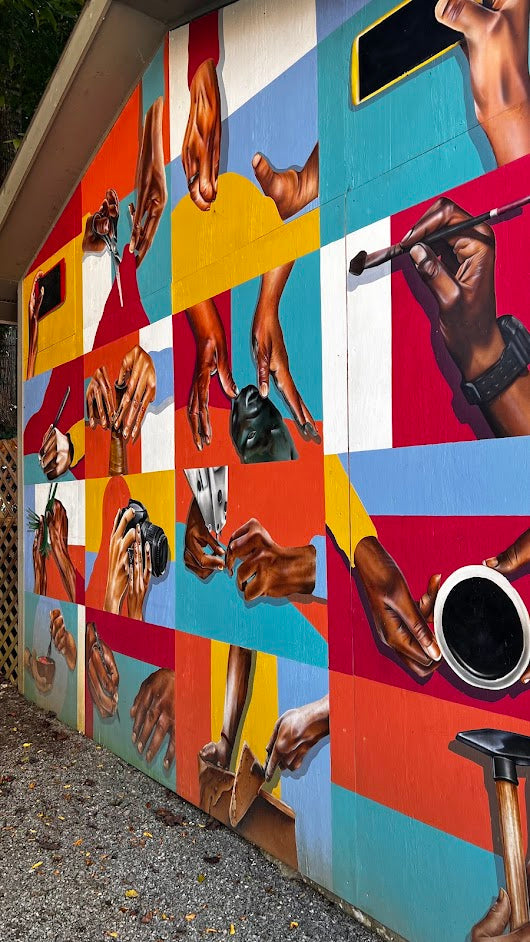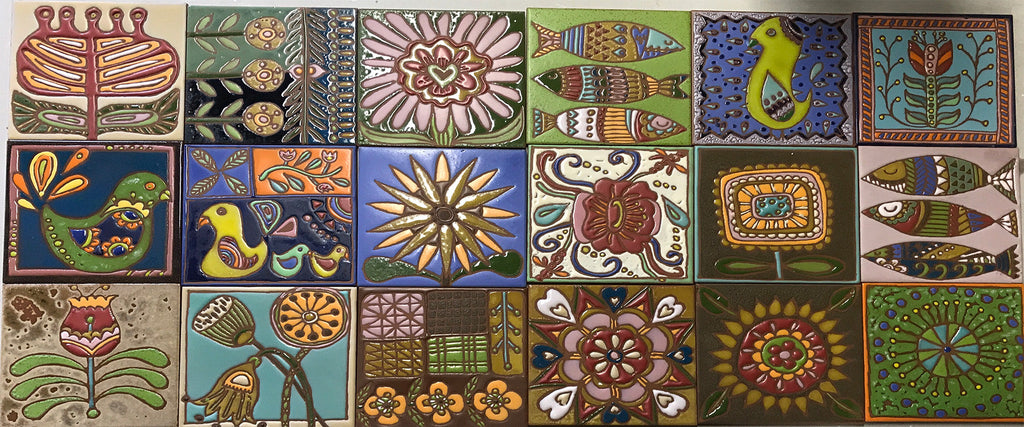Environmental Art - by Amy Lee
Environmental Art - by Amy Lee
Amy Lee, Environmental Consultant, Artist
Not until starting to work with KYH2O as a consultant did I start to realize how much my environmental and water backgrounds have had an impact on my artworks...some of my pieces highlighted in this article were conceptualized and created prior to joining the KYH2O team and some afterwards.
Several of them are on display now at galleries in Virginia, some have previous gallery showings, and others are awaiting their debut:
"Finding My Way"
This is a tribute to all the people, lessons, and trails that have helped me find my way so far in life. It is also a gratitude gesture about the role of following God’s plans for my life and looking forward to the direction of my future. Trail marker cairns are something I’ve always adored when hiking as they often mark the trail, where two trails cross, or the summit peak of a mountain trail. There is an artist’s touch, as well as a bit of luck and patience involved to create them. Gravity is always working against the creation process. My family has always loved spending some time on vacations building them on the rocky Maine shores. I’m always trying to defy gravity when I build a cairn in nature for fun - finding just the right rock to hold the structure up. The word ‘cairn’ comes from Scottish Gaelic. They have been used as burial mound markers and monolithic structures built with human hands and rock. It was interesting creating this sculpture because I basically was taking clay - made originally from the weathering of rock down into fine particles - then transforming it through the heat of the kiln back into rock. I found the irony interesting.

"Flat-i-Trons"
This is a colored porcelain inlay piece. When visiting Boulder, Colorado last year on an RVLife adventure test, I was struck by the grandeur of everything the solid Earth provides in the Rocky Mountains. My husband likes to joke about how I called the main rock formation overlooking Boulder by the wrong name. Aging eyes added a ‘t’ when reading about them and I really thought someone with a highly futuristic mindset named them! They are really named “The Flat Irons” - “Flat-i-Trons” they will forever be to us though.

"Sinking Sands"
Humans build on unstable floodplains like children playing with blocks. 150M people live on land that will be below high-tide by 2050. Participants in this interactive piece choose to interact in one of two ways. They either choose to stack the blocks of ceramic and clay within the water-drenched landscape form to resemble building structures, or they choose to make it rain and wait to see what might happen. Water always wins. This piece is on display for interaction at the Portsmouth Art & Cultural Center in Portsmouth, Virginia through the Ceramic Designer’s Association Annual show titled “Solid Ground”. It will be on display through October 8th - more about this show here.

"Solid Ground - USGS Issued Wading"
This series celebrates my past. There have been many times in my life when surviving what I was doing was a bit iffy. I was always protected. At 50 this year, there is a bit of reflection taking place looking back at some of the adventures that could have been goner-moments. Many for me were in these shoes - when I worked as an Environmental Consultant inspecting bridges with the US Geological Survey early in my career. Checking for solid ground regularly where I stepped was a saving grace. My waders protected me frequently; however, I remember a few times when I didn’t make the best choices. I was wading across a stream about waist deep under a bridge where the water had washed away a hole in the ground. The water was crystal clear. I perceived the depth incorrectly as well as the speed of the current and attempted to ‘jump’ over one of these scour holes under the bridge and downstream I went. I didn’t panic. We were taught what to do to try to not overtop our waders. I did feel a bit of water coming in and it was very cold. I pushed down toward my feet to stay upright and balanced and thankfully the current took me downstream to where I could stand up and walk out of the stream.

"Solid Ground - USGS Issued - Climbing"
This series celebrates my past. There have been many times in my life when survival was a bit iffy. I was always protected. At 50 this year, there is a bit of reflection taking place looking back at some of the adventures that could have been goner-moments. Many for me were in these shoes - when I worked as an Environmental Consultant inspecting bridges with the US Geological Survey early in my career. Checking for solid ground regularly where I stepped was a saving grace. All around Pennsylvania we traveled in these shoes traversing hillsides and mountains. Sometimes we found really great swimming holes! Each day on the team we either wore waders and did the stream work - or hiking boots to do the survey work, sometimes climbing up a mountain to get the right points surveyed for potential high water marks so that we could assess the bridge structure back in the office with computer models. The glaciated hillsides in PA when not trail hiking can make for some treacherous falls. One time under a bridge that was set over a pile of old loose coal-overburden, the hillside gave way and I skidded partially standing, and partially not all the way down the hill…thank goodness I was a skier then too!

This one is titled "A Spring Evening In Kings Park - Perth, WA" -
It will be on display from July 7th until December 31st, 2023 at the Virginia MOCA (Museum of Contemporary Art) - The Show is themed "Curious Collections". My artist's statement for this show:
As a collector of experiences with animals, they often are immortalized in my art and collections. I sleep in an artisan-made whale-shaped bed and I'm a self-proclaimed "bird-nerd".
This piece is created from stoneware clay and glazes fired in the kiln to over 2000F. One evening in King’s Park, Perth, Western Australia, I found myself alone as the sun had set and the glisten of the city lights could be viewed in the distance with the first signs of stars in the sky above. It was warm but not too warm. There was just enough light to make the colors really pop.I walked around the park taking pictures of the amazing flowering trees, shrubs, and annuals - some I had never before experienced. Color all around me. I took a break on a bench and a Kookaburra landed on a branch not far from me and made its iconic calls. A flock of 15-20 rainbow lorikeets landed in the tree above me and danced and played with one another sometimes hanging upside down. I thought I was in a wonderland. Bottle brushes, African violets, and gum trees all in bloom or just past blooming. This piece was created first as a collage of pictures I took that evening and then recreated as a relief sculpture in clay.

This one is titled "Not A Drop To Drink" -
Who decides the golden line between water rich and starved? Americans eat 8lb of lucrative strawberry crops each year. Large farms use 2,000 gallons per minute. Baja producers resort to desalinated sea water creating less-tasty berries. 771M people lack access to clean safe water right now. Water.org

To learn more about Amy Lee’s work, visit AmyLeePottery.com
To learn everything you ever need to know about water, your health and water, testing, and treatment solutions, visit KnowYourH2O.com






Comments (1)
Beautiful work 💙